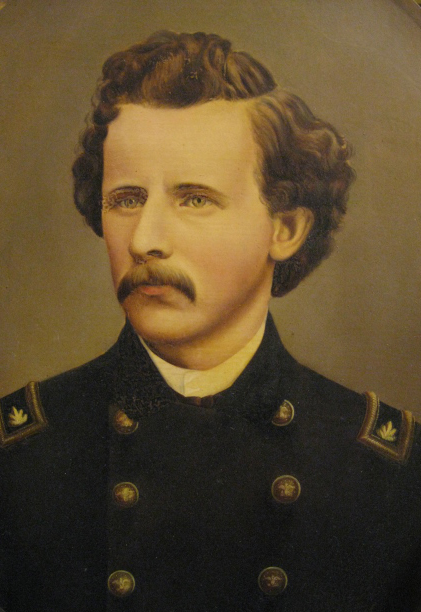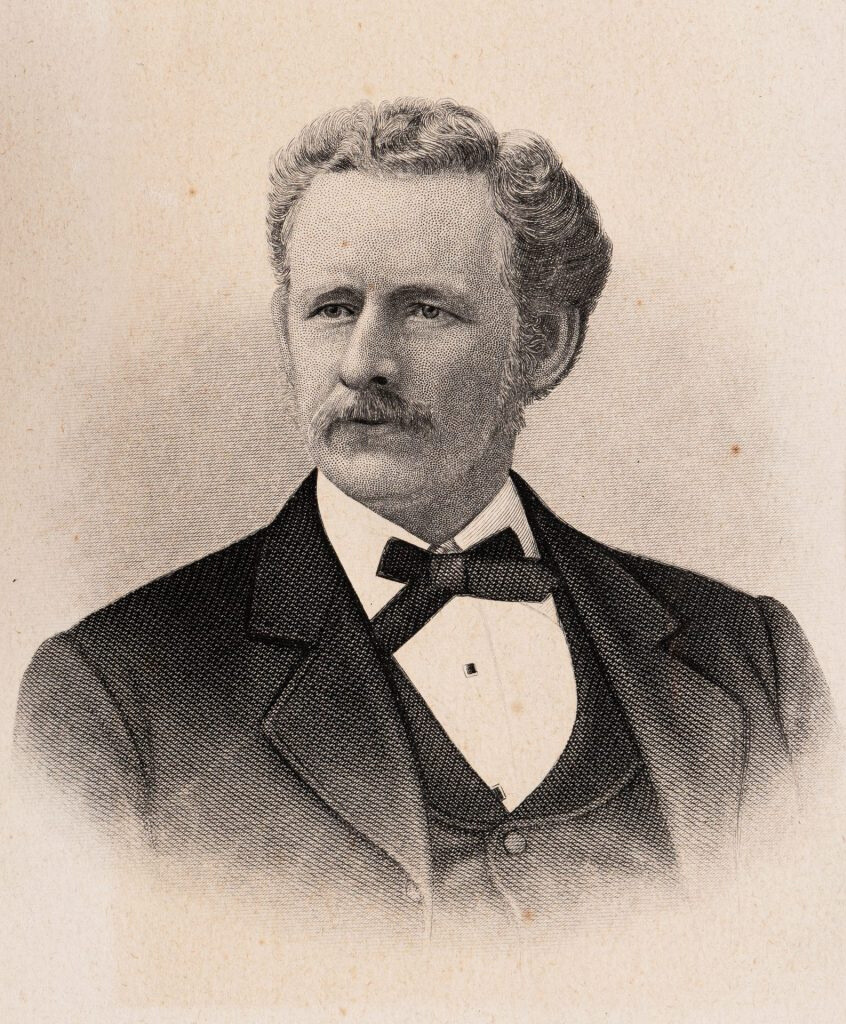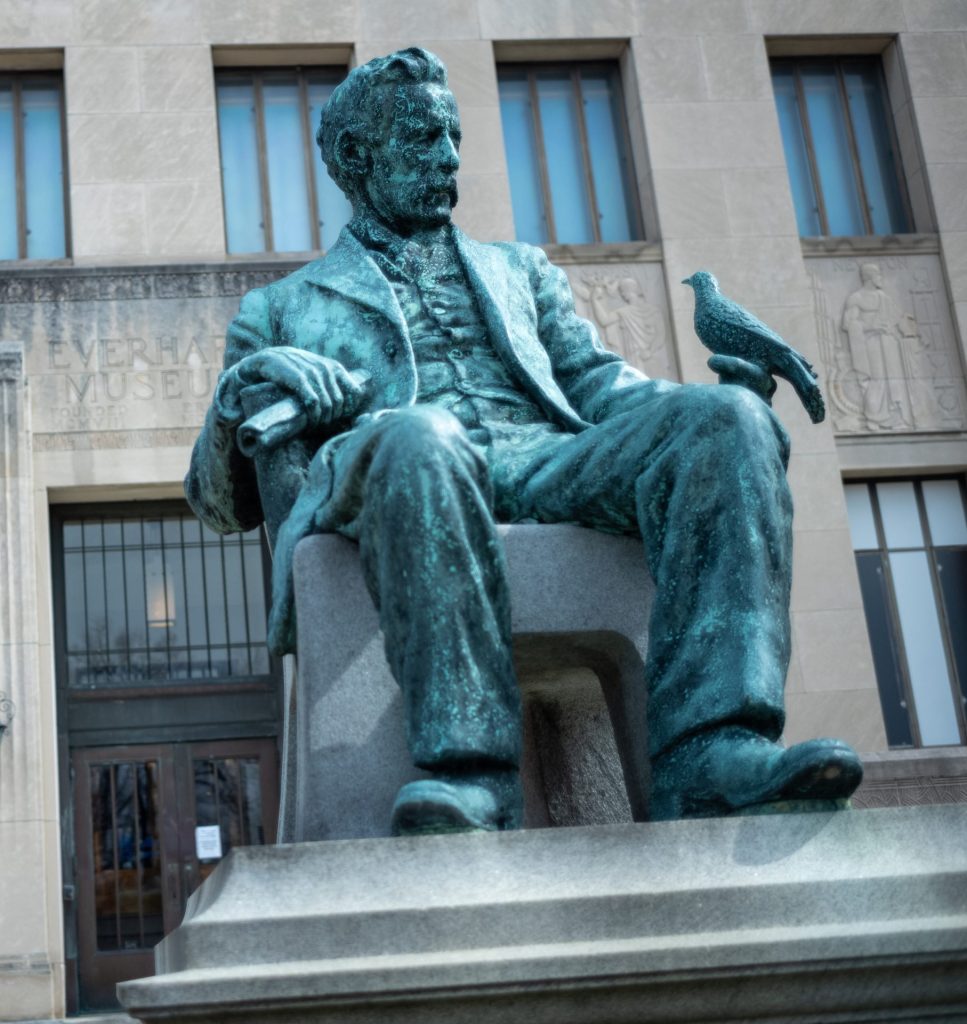Who Was Dr. Everhart?
Dr. Isaiah Fawkes Everhart (1840–1911) was a descendant of German nobility dating from the Thirteenth Century. His earliest ancestor in the Americas was Frederick Eberhard (1697–1751), who emigrated from Wurttemberg, Germany and settled in Philadelphia in 1737. Dr. Everhart was a grandson of James Eberhard (1760–1852), who changed the family surname to Everhart. A soldier in the American Revolution, James Everhart fought alongside George Washington at Valley Forge the winter of 1777–78. James Everhart died in 1852 at age 93, leaving three sons. The youngest son, named after his father, James Everhart (1789–1863), served as an officer in the War of 1812 and settled in Robeson Township, PA where he married Mary Magdalen Everhart (1797–1869) in 1816. The couple, who were prosperous in farming, had seven children, the youngest of whom was Isaiah Fawkes Everhart, born January 22, 1840, in Robeson Township, PA.
Isaiah was educated in Berks County schools before attending Franklin and Marshall College, Lancaster, PA, where he pursued a Natural Science course and graduated in 1861. Isaiah began studying medicine under the instruction of his brother-in-law Dr. Charles A. Heckle. Shortly after the start of the Civil War, he entered the Satterlee General Hospital as a medical cadet, where he cared for over 3000 sick and wounded soldiers while simultaneously studying medicine at the University of Pennsylvania. Everhart received his medical degree in 1863 and was assigned to the Eighth Pennsylvania Cavalry. The Cavalry participated in many major battles in Virginia and Maryland. In February 1865, Dr. Everhart was promoted to Full Surgeon with the rank of Major. In August of that year, Major Everhart was honorably discharged as Chief Surgeon of the Military District of Lynchburg, Virginia.
Following the war, Dr. Everhart traveled extensively through the artistic and industrial centers of Europe. In 1868, he settled in Scranton to oversee family business interests in brass, coal, and iron. He set up a medical practice; served as a staff member of the Scranton State Hospital; was on the first Scranton Board of Health; and was president of the Lackawanna Game and Fish Association. During the anthracite strike of 1871, Everhart was surgeon of the Ninth Pennsylvania Guard. In 1871 he also married Annie Ubil (1847-1898), whose family’s farm abutted the Everhart Berks County homestead. Together Dr. and Mrs. Everhart had one son, Edwin Ellsworth Everhart (1873-1934).
Throughout his life, Dr. Everhart devoted much of his time to the study of Natural History and flora and fauna around him, with particular attention paid to the science of ornithology. Shortly after he moved to Scranton, he began assembling an exhaustive collection of birds, animals, woods, and seeds native to the Commonwealth of Pennsylvania with the intention of eventually donating his collection to a scientific or educational institution. When his bachelor brother, the industrialist James M. Everhart (1828-1897) died in 1897, Dr. Everhart inherited a large portion of his vast estate. In 1904, Dr. Everhart’s immensely wealthy cousin, Benjamin Matlack Everhart, of West Chester, PA, died leaving Isaiah the bulk of his fortune. These two financial windfalls gave Dr. Everhart the means to build and endow his institution to house his growing collection.
On February 3, 1907, Dr. Everhart announced his gift of a museum to the city of Scranton. Work began immediately on the Isaiah Fawkes Everhart Museum of Natural History, Science and Art, which opened its doors for the first time on May 30, 1908. Dr. Everhart spent as much time as his by-then failing health allowed ordering and expanding his collection. On April 14, 1911, Dr. Everhart slipped and fell on the floor of the Museum, fracturing his right hip. He died of complications from this injury at his home on Franklin Avenue in Scranton on May 26, 1911. Over a century later, his legacy lives on through the Museum that bears his name.




